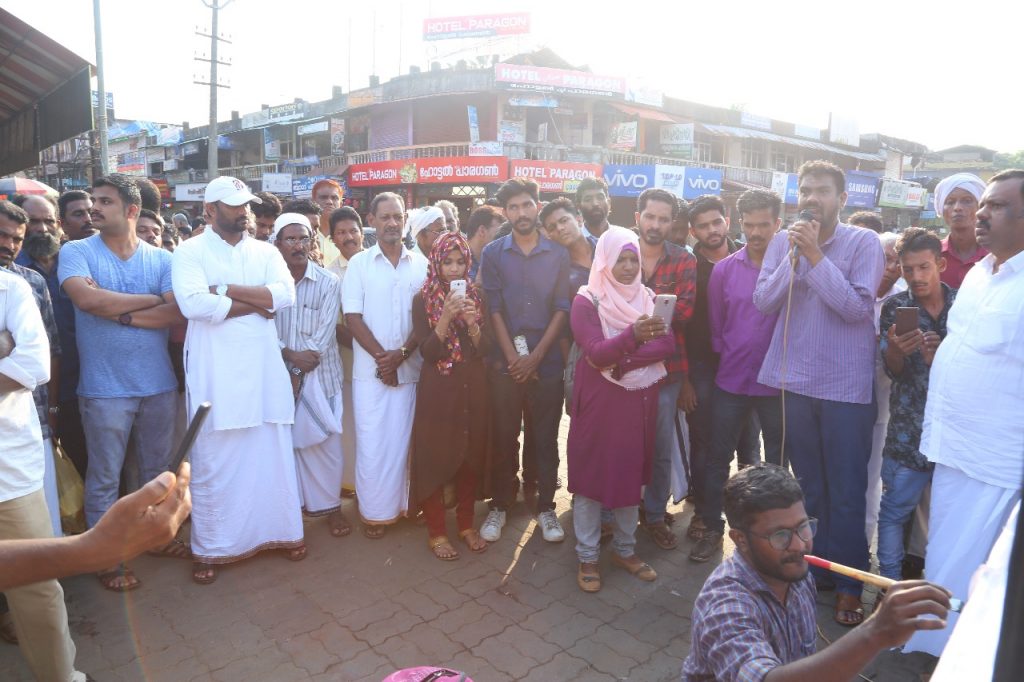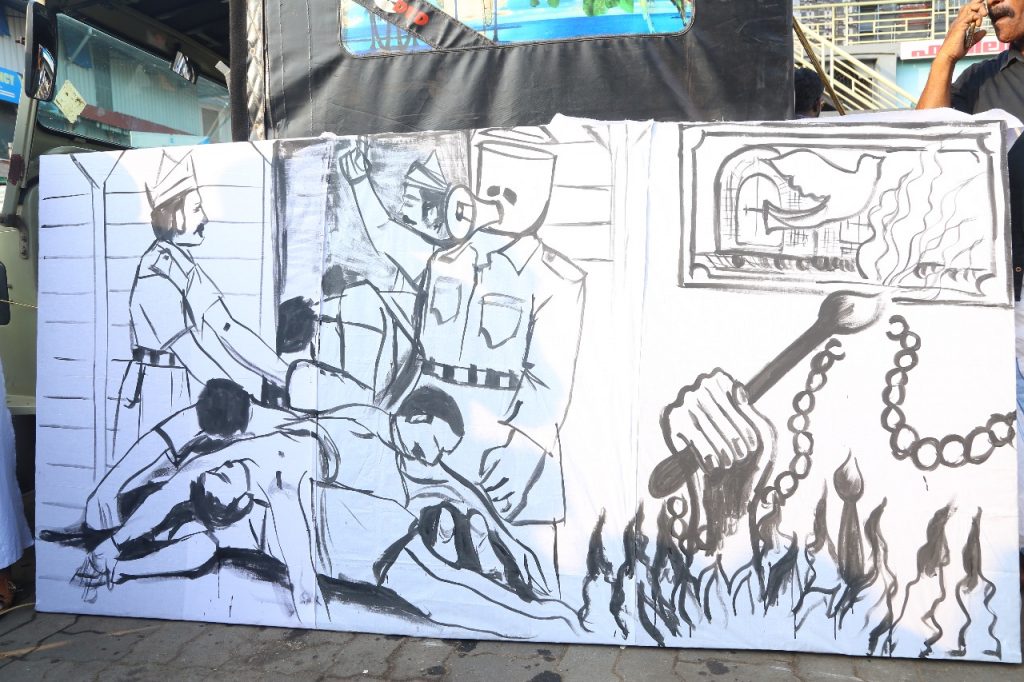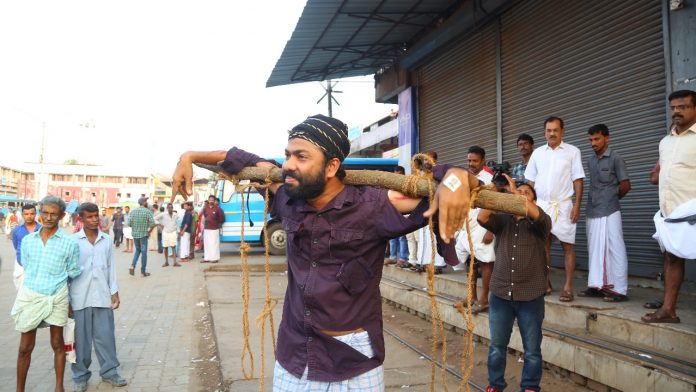On the 97th anniversary of the Wagon Massacre a group of people joined together at the bus-stand in Tirur in Malappuram. They spoke, sang, drew and acted in commemoration of the brutal massacre of more than 60 people in a train wagon which took place during the Malabar Struggle of 1921. The programme was organised by the Cultural Platform Tirur, a small group of youth in and around the town. This act also became a protest against the railway authorities who erased the painting depicting the Wagon Massacre from the Tirur Railway Station.
The programme was inaugurated by artist Prem Kumar who had done a painting of the Wagon Massacre on the wall of the Tirur Railway Station, which was erased by the authorities on November 5 reportedly following protests from the Sangh teams. “If one painting is erased, it will be remembered in the minds of lakhs of people at least a hundred times,” said Prem Kumar to the great applause of the audience. He inaugurated the programme by drawing a picture commemorating the brutal massacre, along with artist Harsha.

Anoop VR talking while Prem Kumar is drawing
Activists Anoop V.R, Shakkir Changaramkulam (Welfare Party of India), Sudeep Ben, Nasar Malik, Raees Hidaya, Asma Nasreen Melethil, Dr. Jowhar Lal, Adv. Faisal Babu, Dr. V. Hikmatullah, Najeeb Kuttippuram, K.K. Baburaj and others spoke at the programme. Nasar Malik sang a song, and Hafsath Annara (teacher) recited a poem. The programme ended by the solo performance of Nasrullah Vazhakkad.
Prem Kumar had painted a picture of the Wagon Massacre on a wall in the Tirur Railway Station on November 4, as part of the countrywide process of beautification of railway stations. Four people spent six days to complete the painting of the historical incident. But it was erased on the next day itself, reportedly because of complaints from the Sangh groups, on the pretext that the painting was “frightening”. The artist was entrusted to do the painting by the railway authorities themselves, but the Palakkad Railway Division authorities later ordered to remove the painting following complaints.

The completed picture of the Wagon Massacre drawn by Prem Kumar and Harsha![]()
It has been 97 years since the brutal massacre. Around 100 people were forced into a freight wagon, without any ventilation, from the Tirur Railway Station at 7 pm on November 17, 1921. They were to be transported to the jail in Bellary in that wagon which could hardly contain 50 people. The people began to cry and scream without getting even air to breathe, but the British army refused to open the bogey until reaching Pothanur near Coimbatore. When the wagon was opened, they saw the horrible sight of people lying dead or unconscious, having suffocated thus and attacked each other for want of air and water. It is said that the station master at Pothanur fainted seeing the deadly sight. Those alive were shifted to a hospital nearby and the dead bodies were sent back to Tirur. 64 people were found dead in the wagon – `60 Muslims and four Hindus from the “lower” caste of Thiyya. 6 people who were hospitalized also died, bringing the toll to 70, as quoted in the book ‘Anglo-Mappila Yuddham’ (Anglo-Mappila war) by AK Kodoor.
The brutal massacre in the wagon, named ‘Wagon Tragedy’ in history, took place during the Malabar Struggle in 1921. The people of Malabar began to fight against the British as part of the Congress-Khilafat Movement, but soon it began to move in its own way against the brutalities of the British. The suffering people of Malabar rose up in arms against the Empire and ousted the British rule in several parts. The rule of the British Empire, said to be the empire where the sun never set, was suspended for about six months in Malabar. It was the first ever defeat of the British anywhere in the colonial world. The Empire decided to teach Malabar a lesson. Martial Law was imposed in Malabar in August of 1921, and several regiments of the British armed forces began their brutal rule, violating all human rights. Those who opposed the British, who were mostly Mappila Muslims and “lower” caste people, were killed, jailed or exiled to the Andaman Islands. Even women and children were not spared of the cruelties. Finally, the leaders of the Struggle were arrested and sentenced to death. While Ali Musliyar is said to have died just before he was to be hanged to death in Coimbatore prison, Variyamkunnath Kunjahammed Haji was shot to death in Malappuram prison in January 1922.
Courtesy: Two Circles
